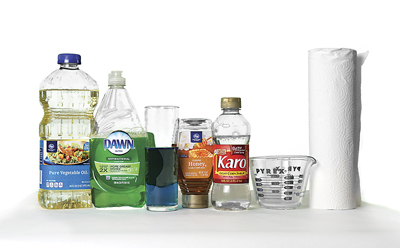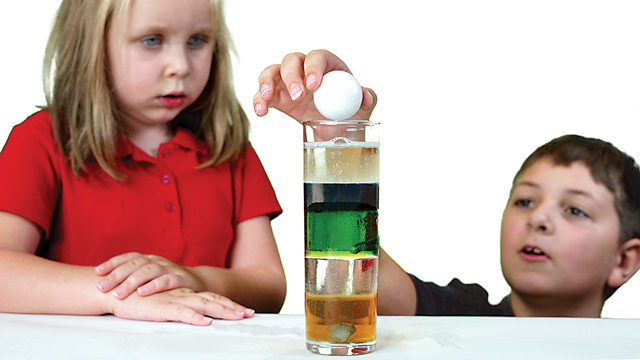We all know things have different weights. Science gets even more interesting when there are two things that are exactly the same size and take up the exact amount of room, and yet, one seems to weigh more than the other. That’s because they have different amounts of matter in them, and that gives them different densities. Is there a way to compare the densities of several different liquids you might have in your home? Let’s do science!
What you need:
• A clear drinking glass or jar
• Vegetable oil
• Dish soap
• Water (with food coloring added)
• Honey
• Corn syrup
• Measuring cup
• Paper towels (for cleanup)
What you do:
1. Try to guess which of your liquids will have the highest density (the most amount of matter in the same space). Measure ¼ cup of that liquid, and pour it into your glass.
2. Next, choose which liquid you think will be less dense and will float on top of your first liquid. Measure ¼ cup of that liquid, and pour it into your glass slowly. Does it float on top – or does it sink to the bottom?
3. Keep adding your liquids until you have used them all.
4. Make some observations. Did you correctly guess which liquids would float and which would sink? When you are done, all the liquids in your glass will be in order from top to bottom – the least dense to most dense.
Extra Challenges:
• You can try adding small objects such as paperclips or marbles. Make sure you guess where they will fall in the tube before you add the object. Now record your results. How far will an egg fall?
• If you have a tight fitting lid for your container, try shaking the container and watch what happens. Record your observations.
• Are you getting any ideas for an upcoming science fair project?





